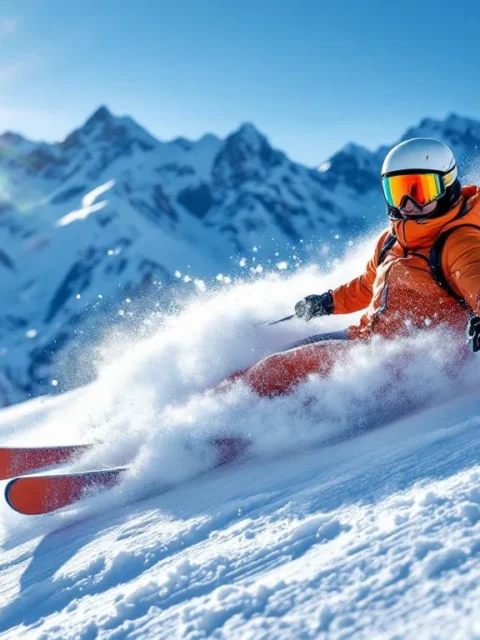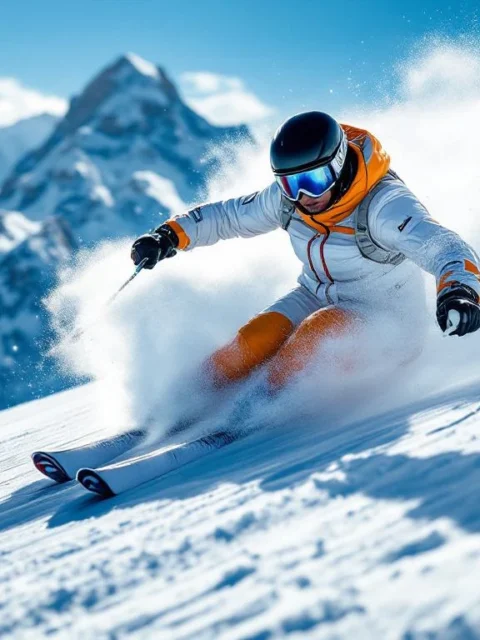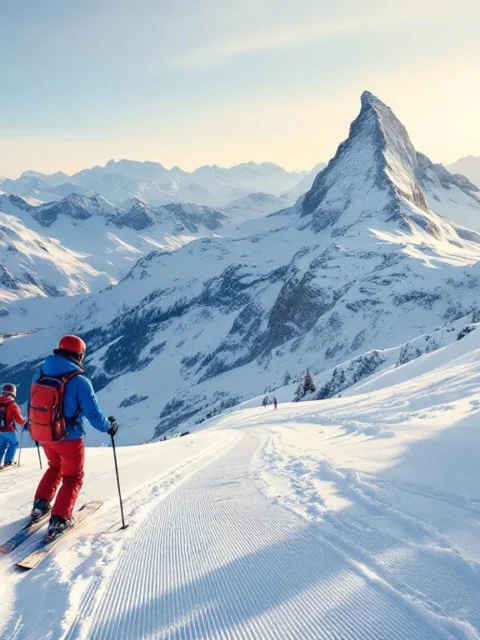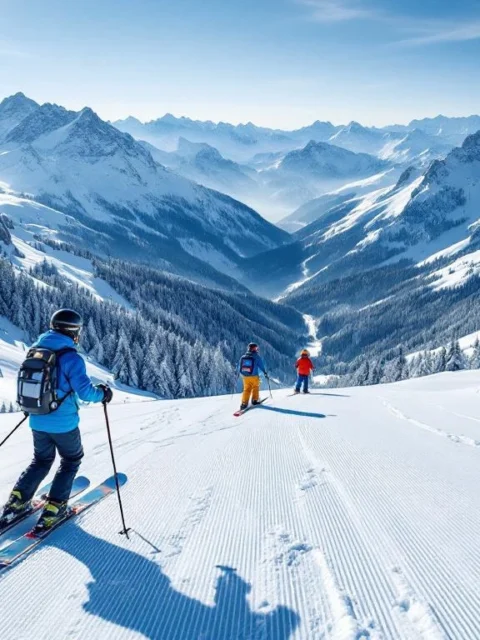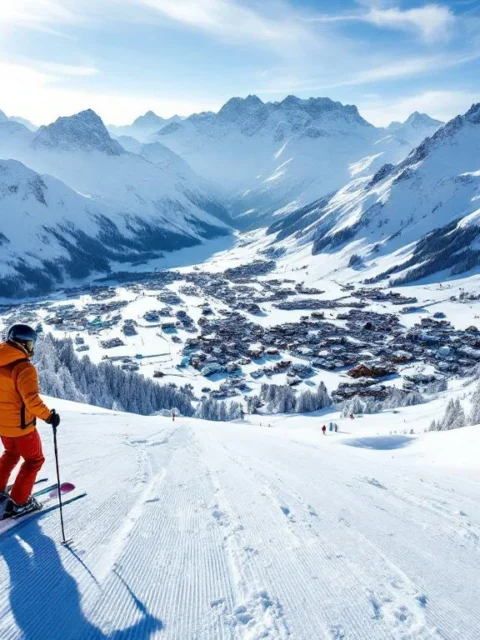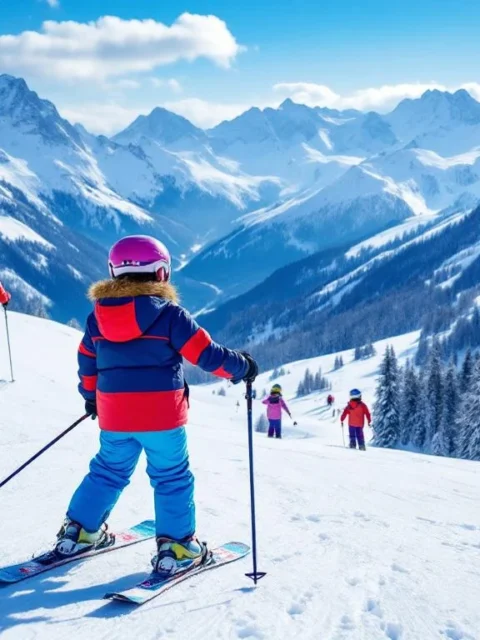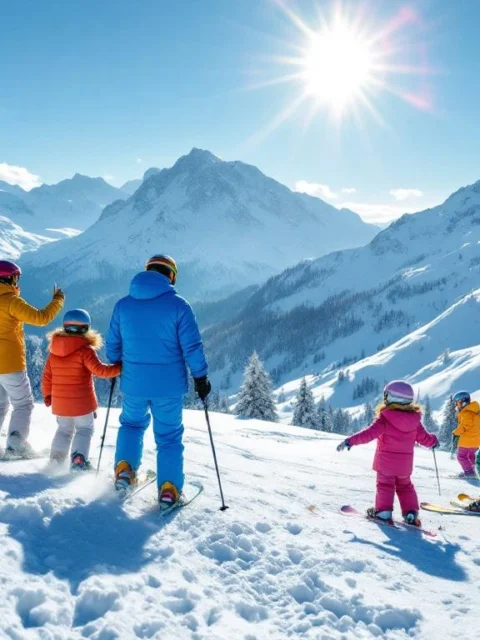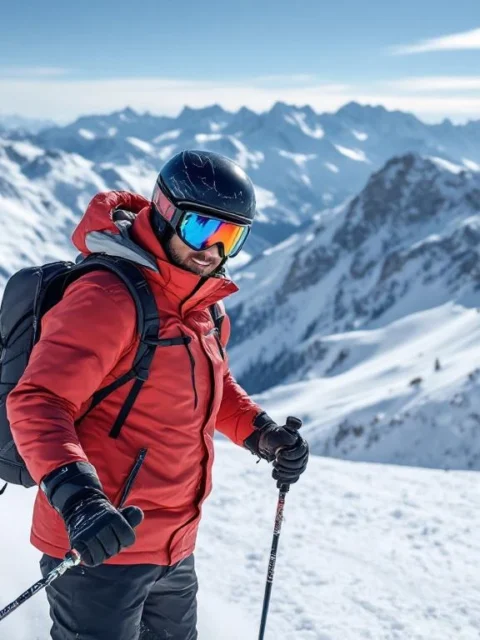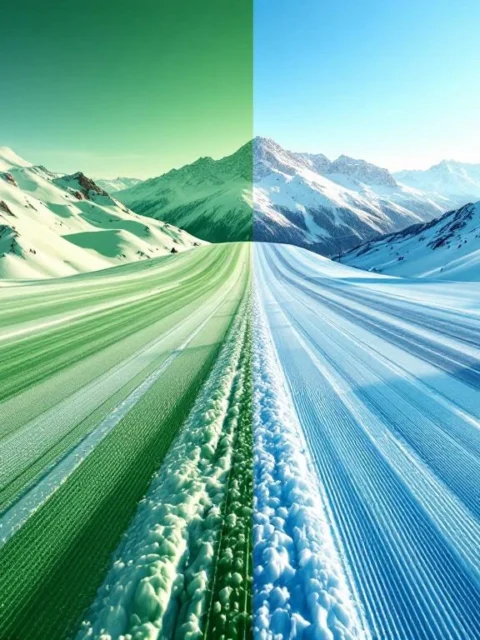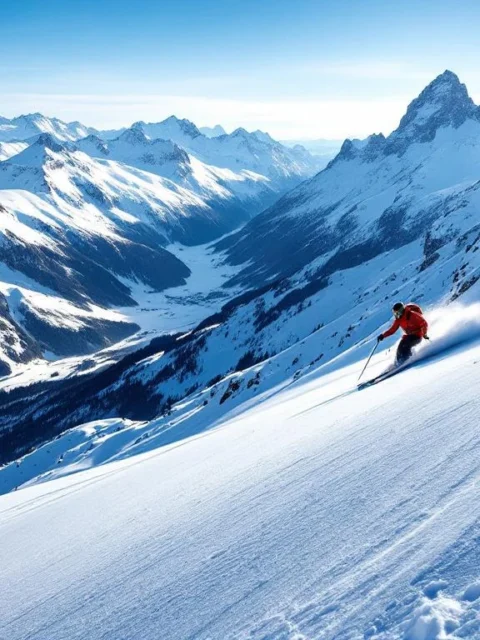What is the most difficult ski area?
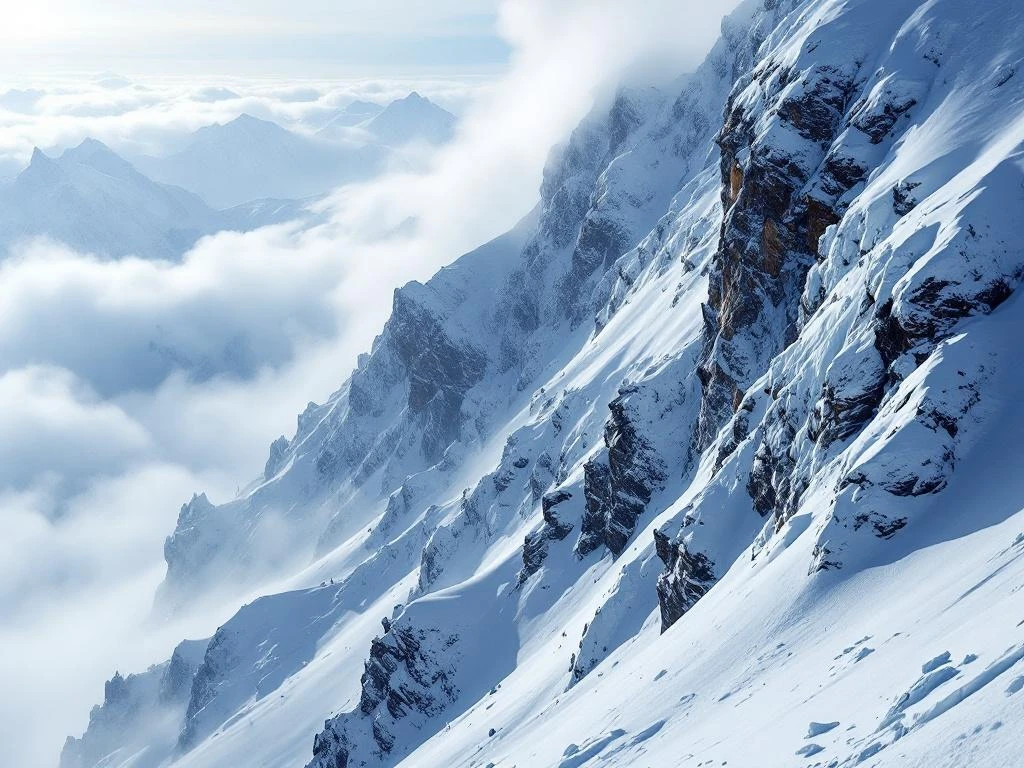
The most difficult ski resort in the world is La Grave in France, followed by other extreme Alpine destinations such as Chamonix, St. Anton, and Verbier. These expert ski resorts distinguish themselves through their steep descents, unpredictable weather conditions, and technically challenging terrain that is only suitable for advanced skiers with years of experience.
What Makes a Ski Resort Challenging for Experienced Skiers?
A ski resort becomes challenging through a combination of steep slopes, technical pistes, extreme weather conditions, and varied terrain. For advanced skiers, these are precisely the elements that create an unforgettable skiing experience.
The main factors that make a ski resort difficult are:
- Slopes steeper than 35 degrees with black pistes and off-piste opportunities
- Altitude differences that create thin air and changing snow conditions
- Unpredictable weather conditions with sudden temperature changes
- Technical terrain variations such as narrow passages, rocks, and icy patches
- Limited piste maintenance in extreme areas
Advanced skiers seek these challenges because they can test their technical skills and push their limits. The feeling of adrenaline and achievement makes these difficult ski pistes so attractive to true powder-spotting enthusiasts.
Which Alpine Ski Resorts Are Known as the Most Difficult in the World?
La Grave in France is universally recognized as the most difficult ski resort in the world, but several other Alpine destinations also deserve a place on this list of extreme ski challenges.
| Ski Resort | Country | Difficulty Level | Characteristic Challenge |
|---|---|---|---|
| La Grave | France | Extreme | Off-piste only, avalanche danger |
| Chamonix | France | Very High | Vallée Blanche, extreme altitude |
| St. Anton | Austria | Very High | Steep black pistes, hard snow |
| Verbier | Switzerland | High | Off-piste variety, weather |
La Grave distinguishes itself because there are virtually no groomed pistes. You ski here completely off-piste from 3200 meters altitude. Chamonix offers the notorious Vallée Blanche, where glacier crevasses and avalanches pose constant threats.
St. Anton is known for its steep descents and hard, icy snow conditions that challenge even experienced skiers. Verbier combines technical difficulty with unpredictable Alpine weather.
What Are the Most Dangerous Aspects of Challenging Ski Pistes?
The greatest risk factors on difficult ski pistes are avalanche danger, ice formation, limited visibility, and off-piste hazards. These aspects require constant vigilance and thorough preparation from advanced skiers.
Important safety risks include:
- Avalanche danger in off-piste areas and with fresh snowfall
- Ice formation on steep slopes that makes falls extra dangerous
- Sudden weather changes with fog and snowstorms
- Rocks and obstacles hidden under thin snow layers
- Glacier crevasses in high-altitude areas
- Exhaustion from thin air at high altitude
Safety considerations for advanced skiers are crucial. Always carry avalanche equipment when off-piste skiing, including transceiver, probe, and shovel. Check daily weather forecasts and avalanche reports.
Never ski alone in extreme areas and inform others about your planned route. Nature is unpredictable, even for the most experienced first-track hunting snow lovers.
How Do You Prepare for Skiing in Extreme Ski Resorts?
Preparation for extreme ski resorts requires excellent physical condition, advanced technical skills, and proper equipment. Professional guidance is often indispensable for a safe experience.
Essential preparation steps:
- Build your fitness months in advance with cardio and strength training
- Practice advanced skiing techniques on less extreme pistes
- Invest in high-quality safety equipment and learn to use it
- Take an avalanche course and practice rescue techniques
- Book lessons with local experts who know the terrain
Your physical preparation should focus on leg muscles, core stability, and endurance. Extreme ski resorts demand everything from your body, especially at high altitude where oxygen is scarce.
Technical skills such as skiing on icy surfaces, steep descents, and variable snow conditions are essential. Consider professional ski lessons for advanced techniques with experienced instructors who can prepare you for these challenges.
Why Do Experienced Skiers Choose the Most Difficult Ski Resorts?
Experienced skiers choose extreme ski resorts because of the unmatched adrenaline and technical challenge that these destinations offer. It is the ultimate test of their skills and courage.
The main motivations are:
- Adrenaline and excitement that only extreme terrain can provide
- Technical challenge to perfect skills
- Personal growth by pushing boundaries
- Unique experiences that ordinary pistes cannot match
- Performance orientation and overcoming fears
- Exclusivity of access to special locations
The psychology behind extreme ski challenges revolves around self-discovery and transcending limitations. For these powder-spotting fanatics, skiing is more than recreation; it is a lifestyle.
Many advanced skiers describe the feeling of a perfect descent in challenging terrain as indescribable. It requires total concentration, technical precision, and mental strength.
Key Considerations When Choosing Challenging Ski Resorts
When choosing challenging ski resorts, safety factors and thorough preparation are the most important considerations. Never underestimate the importance of experience and professional guidance in extreme conditions.
Key takeaways for skiers who want to explore challenging areas:
- Start with less extreme challenges and build up gradually
- Invest in quality equipment and safety training
- Always book local guides or instructors for unfamiliar terrain
- Respect weather conditions and avalanche reports
- Never go alone and inform others about your plans
- Know your own limits and don’t exceed them recklessly
For those seeking these challenging experiences, it is wise to contact experienced instructors who know these extreme areas. We can help you find the right guidance at more than 250 ski schools throughout the Alps.
Remember that even the most experienced first-track hunting snow lovers have respect for the mountains. Safety always comes before adventure, but with proper preparation you can have unforgettable experiences in the world’s most challenging ski resorts.


